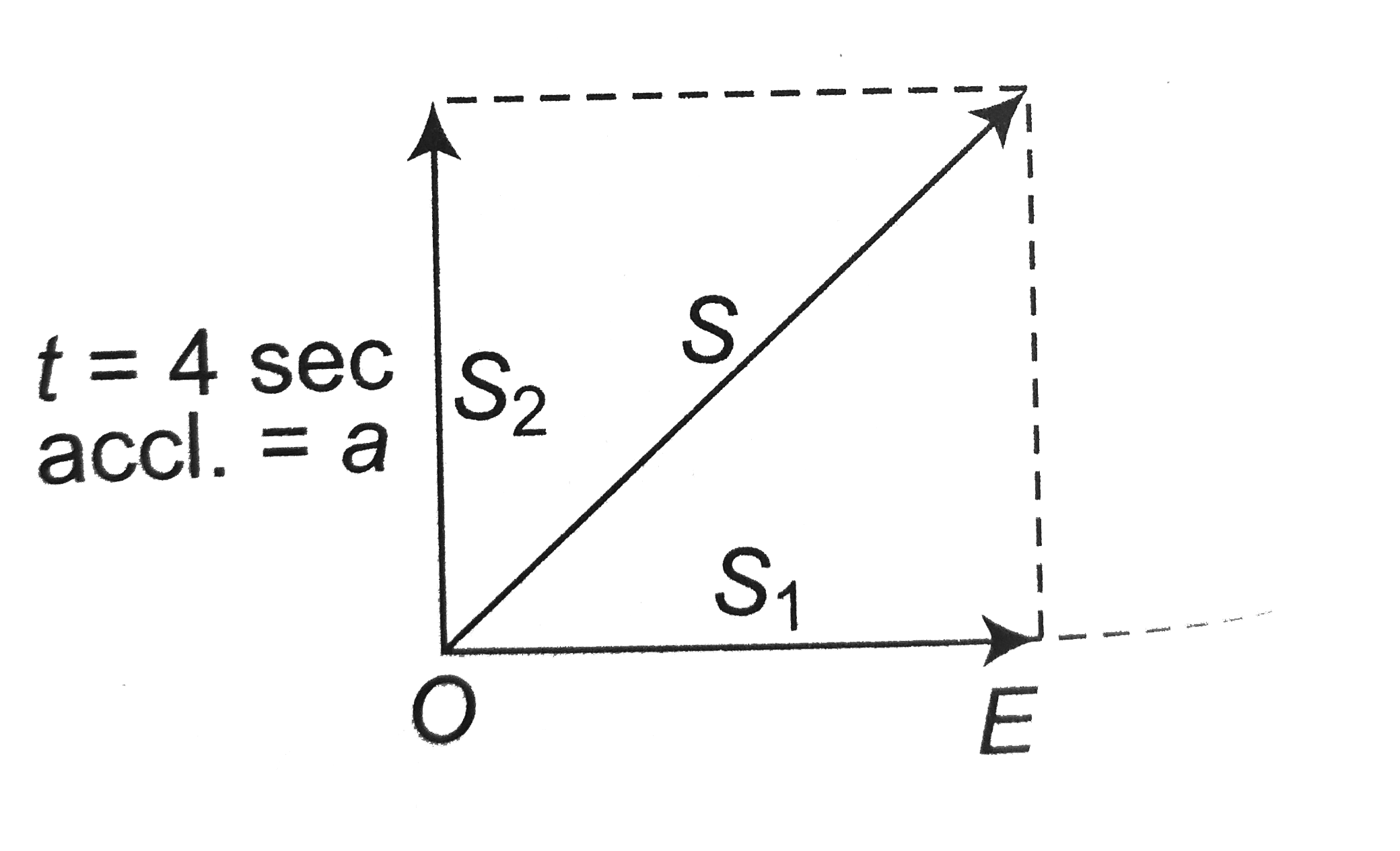A body of mass 2kg has an initial velocity of 3ms−1 along OE and it is subjected to a force of 4N in OF direction perpendicular to OE. Find the distance of the body from O after 4s.
 .
.
Body moves horizontally with constant initial velocity 3ms−1 upto 4s.
∴x=ut=3×4=12m
And in perpendicular direction it moves under the effect of constant force with zero initial velocity upto 4s.
∴y=ut+12(a)t2=0+12(Fm)t2=12(42)42=16m
So its distance from O is given by
d=√x2+y2=√(12)2+(16)2=20m.
Topper's Solved these Questions
- KINEMATICS-2BOOK - CENGAGE PHYSICSCHAPTER - KINEMATICS-2EXERCISE - Exercise 5.3
12 Videos
- KINEMATICS-2BOOK - CENGAGE PHYSICSCHAPTER - KINEMATICS-2EXERCISE - Exercise 5.4
11 Videos
- KINEMATICS-2BOOK - CENGAGE PHYSICSCHAPTER - KINEMATICS-2EXERCISE - Exercise 5.1
15 Videos
- KINEMATICS-1BOOK - CENGAGE PHYSICSCHAPTER - KINEMATICS-1EXERCISE - Integer
9 Videos
- KINETIC THEORY OF GASESBOOK - CENGAGE PHYSICSCHAPTER - KINETIC THEORY OF GASESEXERCISE - Compression
2 Videos
Similar Questions
A particle of mass 1 kg has a velocity of 2m/s. A constant force of 2N acts on the particle for 1s in a direction perpendicular to its initial velocity. Find the velocity and displacement of the particle at the end of 1 s.
View SolutionA body of mass 2 kg is moving along x-direction with a velocity of 2 m/sec. If a force of 4 N is applied on it along y-direction for 1 sec, the final velocity of particle willbe-
View Solution
Knowledge Check
A body mass 2kg has an initial velocity of 3 metre//sec along OE and it is subject to a force of 4N in a direction perpendicular to OE. The distance of body from O after 4 sec will be:
 A12 metresB20 metresC8 metresD48 metres
A12 metresB20 metresC8 metresD48 metresA body of mass 8 kg is moving with a velocity of 4 m/s, find its momentum.
A2B64C32D4Assertion : A body of mass 4 kg has an initial velocity 5ˆims−1. It is subjected to a force of 4ˆjN. The displacement of body from origin after 4 s will be 21.5m.
Reason : The equation v=u+at can be applied to obtain v if a is constant.AIf both Assertion and Reason are correct and Reason is the correct explanation of assertion.BIf both Assertion and Reason are correct but Reason in not the correct explanation of Assertion.CIf Assertion is true but Reason is false.DIf Assertion is false but Reason is true.
A body of mass 5 kg initially at rest is subject to a force of 20 N. What is the kinetic energy acquired by the body at the end of 10 s ?
View SolutionA body of mass 5kg initially at rest, is subjected to a force of 40 N. Find the kinetic energy acquired by the body at the end of 5 seconds :
View SolutionA body has an initial velocity of 3ms−1 and has an acceleration of 1ms−2 normal to the direction of the initial velocity. Then its velocity 4s after the start is.
View SolutionA body of mass 14kg moving with velocity 12m/s is stopped by applying a force of 0.6 N. Then impulse is :-
View SolutionA body of mass m kg starts from rest and travels a distance of s m in t seconds. The force acting on it is
View Solution
